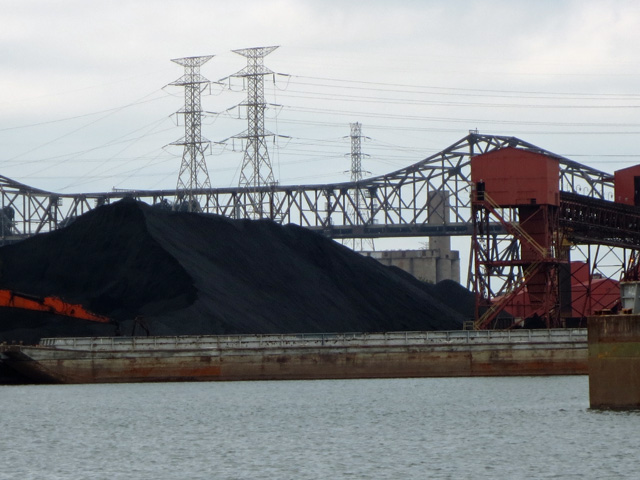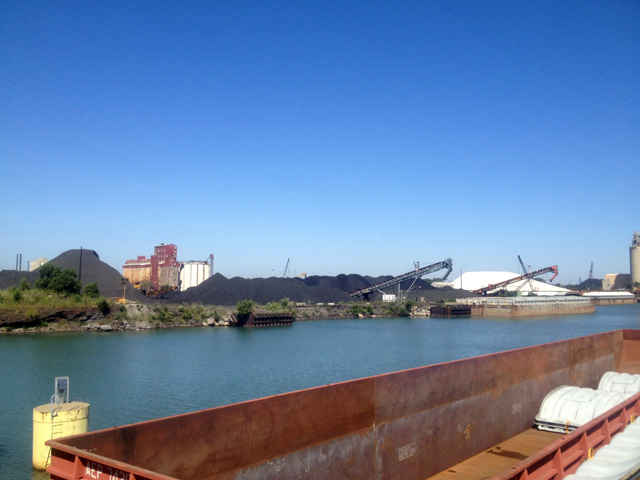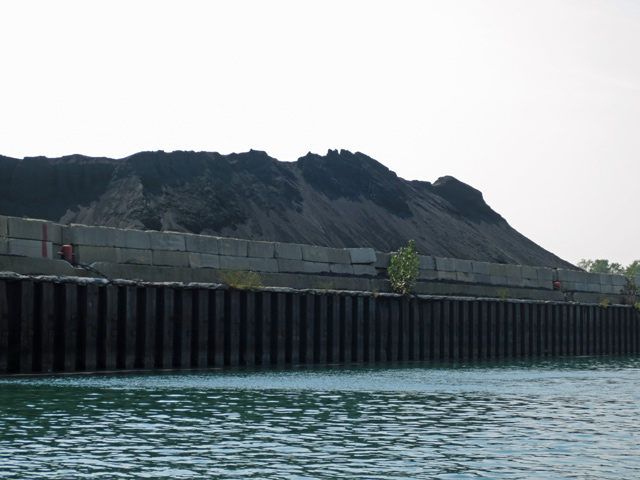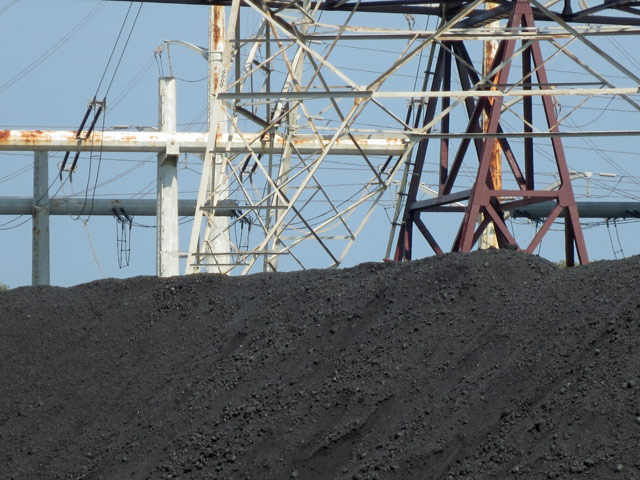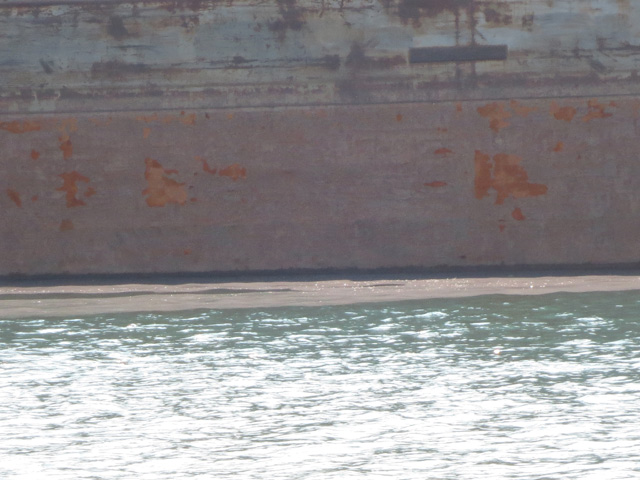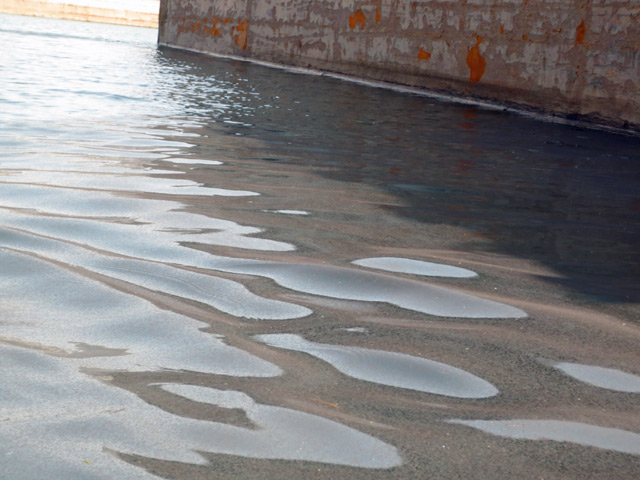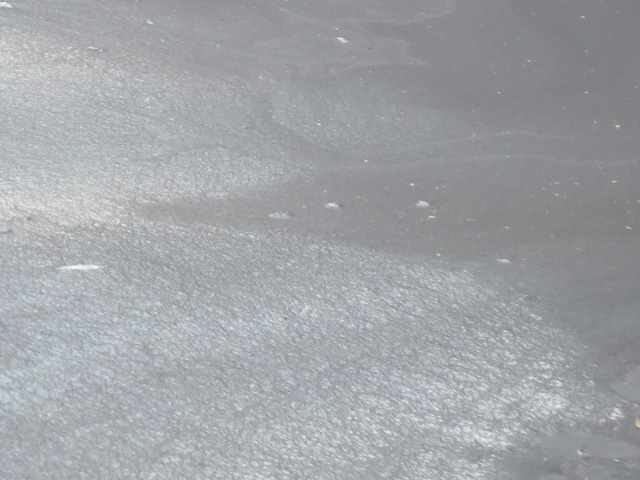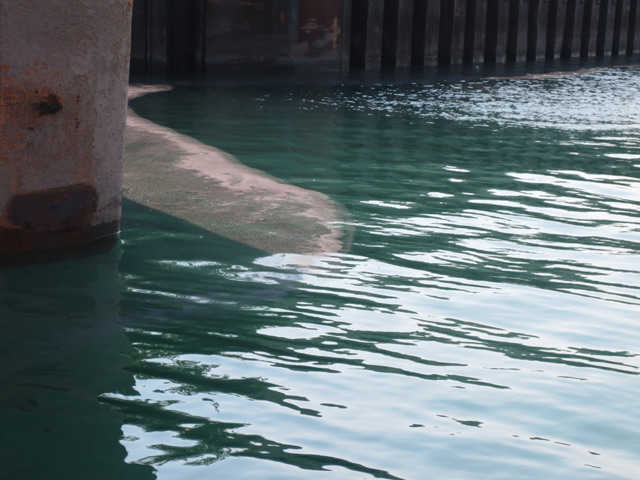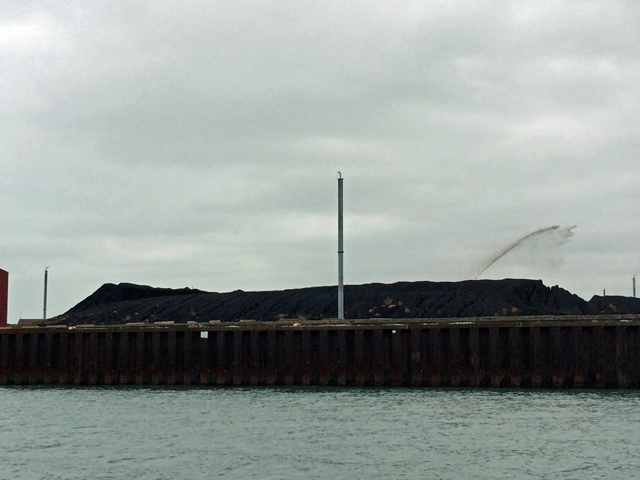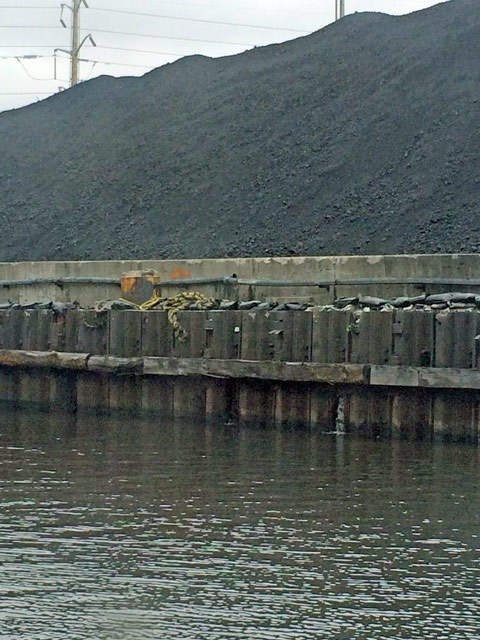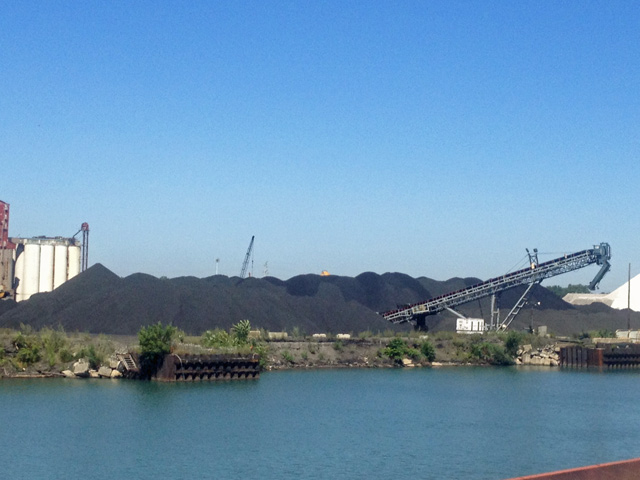'Petcoke' Piles Blight Chicago's Southeast Side
By JoshMogerman in News on Oct 20, 2013 3:30PM
We’ve been watching big black piles stacking up along the Calumet River since taking a tour with the Southeast Environmental Task Force earlier this year.
It's been alarming to watch the coal piles which were feeding now-shuttered plants like Stateline and Fisk and Crawford quickly replaced by refining waste from BP’s refinery in Whiting in the form of petcoke—crusty, black, and dirtier than the previous piles.
Cynics will note that there have always been piles in the area. It’s not a new blight.
But high profile stories from Elizabeth Bracket at WTTW’s “Chicago Tonight,” a massive front page, above the fold feature on Friday from the Trib’s Michael Hawthorne, and Kari Lydersen in Midwest Energy News, all show this blight is different.
On “Chicago Tonight,” the Task Force’s Tom Shepherd made it clear: while there has been dusty stuff stored in the area in the past, the neighborhoods grudgingly accepted them, knowing that the piles were central to jobs in the area.
The petcoke, however, is a waste product that represents a loss, rather than a gain, for communities nearby:
“Folks in this area worked in the mills like my dad did for 39 years,” he said. “When we had coal, we knew that meant jobs in the mills. Today, all mills are gone and this product is being shipped elsewhere, and we don't feel like we should be the dumping ground for this to be shipped out to China, to Canada, to Mexico.”
In the Trib, the Task Force’s Peggy Salazar channeled neighborhood concerns about the dustclouds—rife with heavy metals—seen coming off the piles.
Salazar asked:
"How is our neighborhood ever going to recover and attract jobs if these black clouds of dust keep blowing?" said Salazar. "We shouldn't have to live with this every day."
What’s the big deal? Well, the gallery above shows what we saw on our two most recent trips down to the river; piles that tower over nearby homes, as well as portions of the river mucked with dust from the piles, and barges moored on the banks. And here’s the thing. This is just the tip of the iceberg.
The refinery will push out 6,000 tons of this stuff every day once it goes online fully. That has not even happened yet…
Chicago is not the first city where this has happened.
The battle over petcoke piles in Detroit have been well-documented. Both represent issues at the heart of simmering climate and energy debates going on around the country.
As NRDC’s Meleah Geertsma told “Chicago Tonight”:
“These problems show that the tar sands problems are not just from a refinery over there in Indiana or up in Canada somewhere far away from Chicago, but that they’re real impacts right in the cities in which we live, and there are waste products from refining tar sands that are making their way into Chicago neighborhoods.”
Given the controversial nature of darn near everything and everyone involved in creating this mess (BP, the Koch brothers, who are actually the ones buying up and holding this stuff, and the tar sands oil that is at the center of the national Keystone XL debate), you can expect debate to rage for some time.
